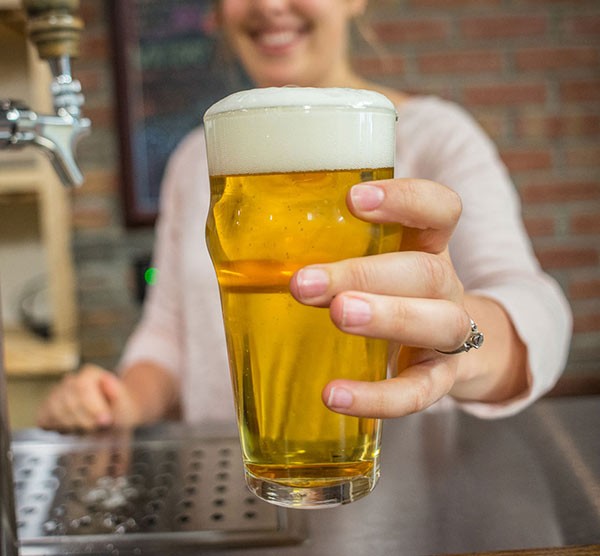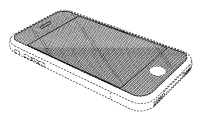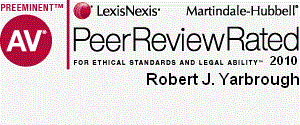Newsletter Issue 86 - April 2016
In this issue:
Defend Trade Secrets Act coming
Starting a brewery
Functional design patents
Ask Dr. Copyright ...
Dear Doc:
I know that this is not a copyright question, but I have
heard that trade secrets are about to get a lot more important.
What's up?
Signed,
Johnny Rivers
Dear Johnny:
You hear right. On April 27, 2016, by a vote of 410-2, the US House
of Representatives passed the
Defend Trade Secrets Act (DSTA). The Senate had already approved
it, and it's expected that President Obama will sign it very soon.
It's a major step forward because before this law, trade secrets
were only protected under various state laws, and many of these laws
were very weak.
The DSTA establishes a federal cause of action for misappropriation
(stealing) a trade secret that is used in interstate commerce.
What's a trade secret? Here's what the law actually says:
"...all forms and types of financial, business, scientific, technical, economic, or engineering information, including patterns, plans, compilations, program devices, formulas, designs, prototypes, methods, techniques, processes, procedures, programs, or codes, whether tangible or intangible, and whether or how stored, compiled, or memorialized physically, electronically, graphically, photographically, or in writing if-(A) the owner thereof has taken reasonable measures to keep such information secret; and (B) the information derives independent economic value, actual or potential, from not being generally known to, and not being readily ascertainable through proper means by, the another person who can obtain economic value from the disclosure or use of the information. (18 U.S.C. § 1836(b))
It seems that just about the only thing that is not a trade
secret is something known, but never physically represented! (And,
of course, stuff that is not really secret, or is worthless - duh!)
The new law allows a federal civil lawsuit against one who
misappropriates a trade secret, and includes a provision for the
court to order seizure by law enforcement officials as a preventive
measure. This is a lot like federal trademark law, where infringing
goods may be seized and held to prevent their being sold. The law
also contains provisions for injunctions, reasonable royalties,
damages, double damages, and attorney's fees.
Who loves this law? Employers, who will now be able to bring a
big-ol' federal lawsuit against competitors who hire away key
employees to get at secret information, and against former employees
who threaten to use secret information outside their former company.
Who hates this law? Workers who will be sued, just to keep them from
job-hopping or from starting a new company to compete against their
former employer. Who REALLY LOVES this law??? The Doc, and all other
intellectual property lawyers, naturally!
Need to protect a trade secret? Talk to the attorneys at LW&H.
They're up to speed on DSTA (and it's not even a law yet!)
Until next month,
The Doc
Brewers -- Get It Right the First Time!
The
popularity of craft beer increases every year. In 2015, there
were 4,144 breweries in the United States. Pennsylvania was one of
15 states that is home to more than 100 craft breweries.
Starting a brewery may be a popular endeavor but it is not simple.
There is a thicket of state and federal regulations that you must
understand and comply with even before you open your doors to the
public. If you want to bottle and distribute beer beyond the
confines of a brewpub/restaurant there are even more rules to
follow. It is no wonder that there are numerous consultants -- from
lawyers to trade associations -- who offer their services to help
you comply with the rules and regulations.
If bottling your brew and distributing it to the public is your
goal, a branding or marketing plan should be a central component of
your business plan. The first step is to select a trademark; never
an easy process. We counted more than 35,000 registered live U.S.
trademarks that include "beer" in the description of goods and
services! A trademark is any word, phrase, design or device that
identifies the source of the goods identified by the mark. The
owner's rights to a mark are infringed if someone else uses a mark
which is "confusingly or deceptively" similar to his or her mark.
The degree of such confusion, if any, is based upon the similarity
of use and the graphical and audible (i.e., how it sounds)
similarity of the two marks.
So, how do you choose a distinctive but non-infringing trademark?
First, create a list of trademarks you like and, second, perform a
trademark clearance search for each mark. You could do it yourself
but the most effective way is to purchase a commercial trademark
clearance search, which is much more thorough than a typical Google
search but is, of course, more expensive. Don't be distracted by the
price, though. It will be far more expensive to be forced to rebrand
in compliance with a cease and desist letter. Once you have a high
level of confidence that the mark you have chosen is not infringing,
you should file a trademark registration application with the U.S.
Patent and Trademark Office ("PTO"), a process that may take from
nine to 12 months from start to completion.
The craft brewer undertaking this process must understand the timing
issues. Although you don't need a registered trademark to comply
with the federal and state liquor regulations, you must be confident
that your trademark is not infringing someone else's intellectual
property. Here's why. After you have obtained the necessary federal
and state brewers license, you may also have to submit your labels
for approval to the Alcohol and Tobacco Tax and Trade Bureau ("TTB")
to obtain a "Certificate of Label Approval" ("COLA"). Although the
TTB does not require you to obtain a COLA for beer sold within a
single state, some states such as Pennsylvania will require you to
obtain a COLA anyway. Processing of the COLA takes approximately 3
weeks. Before you start selling you also must submit your labels to
the Pennsylvania Liquor Control Board ("PLCB") for brand approval.
Neither the TTB or PLCB will determine whether you have the right to
use the trademarks you choose. The TTB, in fact, states: "TTB
approval of a COLA neither automatically confers trademark
protection, nor indicates that a particular mark may be used in
violation of applicable intellectual property law." What does all
this mean? It means that if you aren't confident that you have
rights in the brands that you choose and you receive a cease and
desist letter after you've obtained government approval of your
brands, you may find yourself having to choose another trademark and
resubmit all your regulatory filings. It may also mean you have to
refile your federal trademark applications.
Avoid the delay and expense created by multiple refilings and make
sure you perform a solid comprehensive clearance search before
submitting your brands to the government for approval. If you need
assistance, contact the trademark lawyers at Lipton Weinberger &
Husick. They have the experience you are looking for.
The Functional Design Patent
If you have patents or have been involved in patenting, then you have heard about the difference between design and utility patents. The explanation probably went something like this:
A utility patent protects how a thing does what it does. A design patent protects the appearance of the thing.
And:
A design patent cannot protect the functional aspects of the design - the function of the invention is the exclusive realm of the utility patent.
These principles are easy to summarize, but hard to apply.
In the 2010 case of
Richardson v Stanley Works, the Federal Circuit Court
underscored that design patents do not protect the function of the
invention. Richardson considered whether a Stanley carpenter's tool
infringed a design patent for a similar tool. The lower court
identified each of the functional and ornamental elements of the
patented tool and excluded the functional aspects from
consideration. The Federal Circuit affirmed.
Some litigants and trial courts reached the conclusion that
Richardson required that trial courts expressly ignore any feature
of a patented design that serves any function when considering
whether a design patent is infringed. If this position were the law,
it would severely limit the value of design patents.
The Federal Circuit has been backing away from Richardson ever
since. In
Apple v Samsung, Samsung argued that Apple's design patents for
the iPhone and iPad had very limited scope because the design
elements of those devices are functional. The Federal Circuit
rejected the argument and determined that Samsung infringed Apple's
design patents.
In
Ethicon Endo-Surgery v Covidien and in
Sport Dimension v Coleman Co., decided last week, the trial
courts refused to consider functional elements of the designs. In
Ethicon, the design patent related to a handle and an adjustment
knob for a surgical tool. Since the handle and adjustment knobs both
served functions, the trial court concluded that they could not be
protected by design patent and the issued patent protected nothing
at all. In Sport Dimension, the trial court concluded that certain
features of a water wing-type flotation device were functional and
refused to consider any ornamental aspect of those functional
features. In both cases, the Federal Circuit rejected the argument
and reversed the trial courts. In each of these cases, the Federal
Circuit concluded that the trial court must consider the ornamental
design of even functional parts.
The most important question that the courts will consider in
determining whether a design element is too functional for design
patent protection is whether there are alternative designs that a
competitor can use to perform the same function. If there are
alternatives that perform as well, then the court is unlikely to
determine that the element is too functional to protect by design
patent. Other factors a court will consider are whether the patented
design is the 'best' design, whether utility patents address the
same features, whether advertising touts the features.
The bottom line: the ornamental aspect of even functional features
can be the subject of a design patent, for example the curved shape
of a tool handle or the rounded corners of a tablet computer.

